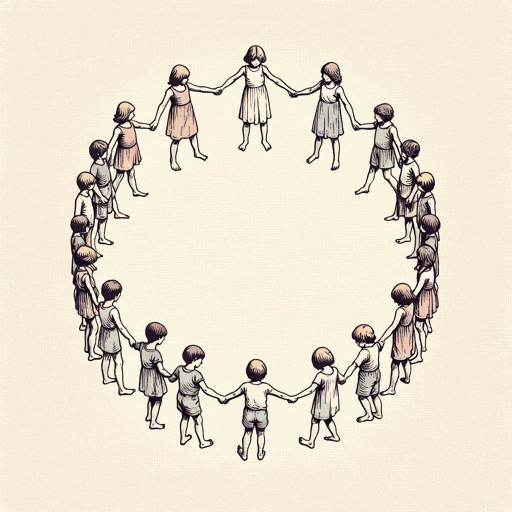18 pages • 36 minutes read
Margaret AtwoodHelen of Troy Does Countertop Dancing
Fiction | Poem | Adult | Published in 1995A modern alternative to SparkNotes and CliffsNotes, SuperSummary offers high-quality Study Guides with detailed chapter summaries and analysis of major themes, characters, and more.
Summary and Study Guide
Overview
Margaret Atwood—who is known primarily for her novel The Handmaid’s Tale (1985)—started her career as a poet. She has continued writing poetry, producing seventeen collections since her 1961 debut. “Helen of Troy Does Countertop Dancing” appeared in her collection Morning in the Burned House (1995), which was her fifteenth. Throughout her career, Atwood has written about Greek mythology, usually changing the point of view to a female perspective to explore feminist concerns regarding power, sexuality, objectification, and financial inequity. The themes in “Helen of Troy Does Countertop Dancing” are evident throughout the body of her work and in her creative renderings of other mythic figures like Penelope, Eurydice, Circe, Sekhmet, and Daphne. Different versions of Helen of Troy also appear in Atwood’s novella The Penelopiad (2005) and in a story in Tent (2006) called “It’s Not Easy Being Half-Divine.” As many scholars have noted, contemporizing myths or fairytales allows an author to house criticisms of the status quo, which is what Atwood consistently does in her speculative poetry and fiction.
Poet Biography
Margaret Atwood was born on November 18, 1939 in Ottawa, Ontario, in Canada. Her father was Carl Edmund Atwood, a scientist who studied insects, and her mother, Dorothy, was a dietician. Because of her father’s entomological work, Atwood spent much of her early years traveling in the woods of northern Quebec with her parents and two siblings. She did not begin to attend formal schooling until twelve but had already begun writing creatively.
In 1957, Atwood graduated high school and began attending the University of Toronto. She graduated in 1961 with a B.A. in English. That same year, Atwood continued her studies in the graduate program in English at Radcliffe College of Harvard University. She earned her M.A. in 1962 and started but did not finish her doctorate. She married American Jim Polk in 1968 but they divorced in 1973. That same year she and writer Graeme Gibson married. They remained married until his death in 2019. Atwood and Gibson had one daughter, Eleanor, who was born in 1976.
Atwood started her career as a prolific poet. In the 1960s, Atwood published six collections including, Double Persephone (1961), Kaleidoscopes Baroque (1965), Talismans for Children (1965), and The Circle Game (1966), which won the Governor General’s Award, solidifying her reputation. Speeches for Doctor Frankenstein followed in 1966 along with The Animals in That Country (1968). In the 1970s, she published six more collections including The Journals of Susanna Moodie (1970), Procedures for Underground (1970), Power Politics (1971), You Are Happy (1974), Selected Poems (1976), and Two-Headed Poems (1978). True Stories came out in 1981 and was followed by Love Songs of a Terminator (1983), Snake Poems (1984), Interlunar (1984), Selected Poems in two volumes (1984; 1986). After a pause to concentrate on fiction, Atwood published Morning in the Burned House in 1995, in which “Helen of Tory Does Countertop Dancing” appears, and Eating Fire in 1998. There was a near decade break until the publication of The Door (2007) followed by a hiatus (in poetry) of thirteen years before the publication of Dearly (2020).
Atwood is probably best known for her contributions to fiction, particularly her novels, which deal with female experience. Her first novel, The Edible Woman was published in 1969 and was followed by three novels in the next decade: Surfacing (1972), Lady Oracle (1976), and Life Before Man (1979). Like her poetry, all these novels explore gender identity as well as social politics. Surfacing, which was critically praised, helped established Atwood as a significant emerging writer. After the publication of Bodily Harm (1981), Atwood published the novel that would earn her worldwide fame, The Handmaid’s Tale (1985). Cat’s Eye (1988), The Robber Bride (1993), and Alias Grace (1996) only furthered her reputation as an important contemporary novelist. The Blind Assassin (2000) was Atwood’s tenth novel and won both the Booker Prize and the Hammett Prize. Oryx and Crake was published in 2003, the first of a speculative trilogy that includes The Year of the Flood (2009) and MaddAddam (2013). The Heart Goes Last was published in 2015. Atwood also published retellings of Homer’s The Odyssey and Shakespeare’s The Tempest with her The Penelopiad (2005) and Hag-Seed (2016), respectively. Her sequel to The Handmaid’s Tale called The Testaments was published in 2019 and won the Booker Prize.
Throughout her career, Atwood has taught at a variety of universities including University of British Columbia, Sir George Williams University, University of Alberta, York University, University of Toronto in Canada as well as the University of Alabama-Tuscaloosa, New York University, and Trinity University in the United States. Along with poetry and novels, Atwood has written several short story collections, nonfiction, an opera, graphic novels, and children’s books, as well as books on the history and future of Canadian literature.
Poem Text
Atwood, Margaret. “Helen of Troy Does Countertop Dancing.” 1995. Academy of American Poets.
Summary
In “Helen of Troy Does Countertop Dancing,” the mythological figure of Helen—the most beautiful woman in the world—is placed in the here and now, working as a nude dancer. The poem is written as a dramatic monologue that offers Helen’s thoughts as she observes how people in the strip club respond to her, whether in judgment or lust. In the first stanza, she addresses imagined women critics, who would tell her to work another job. She notes that “dancing” (Line 3) pays the bills and does not care if the women find it demeaning and believe she should "Get some self-respect" (Line 4).
In the next stanza, she explains how she is in the business of making the male clientele’s fantasies about “desire” (Line 22) come true. The club goers react to Helen with either anger or worship, and she understands that she functions as an unattainable object to most who watch her. She sympathizes with their humanity, their feelings of defeat, and their struggles. Yet, she is also “tired” of being objectified as a metaphor for their dreams and/or nightmares. She’s aware they “reduce [her] to components” (Line 68) and that they would be happy to “wall [her] up alive / in [her] own body” (Line 71-72). Calling to mind her own history as both a product of “rape” (Line 61) by Zeus in the form of a “holy swan” (Line 61) and her divinity as that god’s daughter, she reimagines her own immortal power. She no longer laments but “rises” (Line 77) as a “goddess” (Line 80) above the “countertop” in a “blazing swan-egg of light” (Line 79). The poem ends with a warning, if anyone tries to “touch [her]” (Line 83) she will incinerate them.
Related Titles
By Margaret Atwood

Alias Grace
Margaret Atwood

Backdrop Addresses Cowboy
Margaret Atwood

Cat's Eye
Margaret Atwood

Death By Landscape
Margaret Atwood

Hag-Seed: William Shakespeare's The Tempest Retold
Margaret Atwood

Happy Endings
Margaret Atwood

Lady Oracle
Margaret Atwood

Life Before Man
Margaret Atwood

MaddAddam
Margaret Atwood

Oryx and Crake
Margaret Atwood

Rape Fantasies
Margaret Atwood

Siren Song
Margaret Atwood

Stone Mattress
Margaret Atwood

Surfacing
Margaret Atwood

The Blind Assassin
Margaret Atwood

The Circle Game
Margaret Atwood

The Edible Woman
Margaret Atwood

The Handmaid's Tale
Margaret Atwood

The Heart Goes Last
Margaret Atwood

The Landlady
Margaret Atwood

